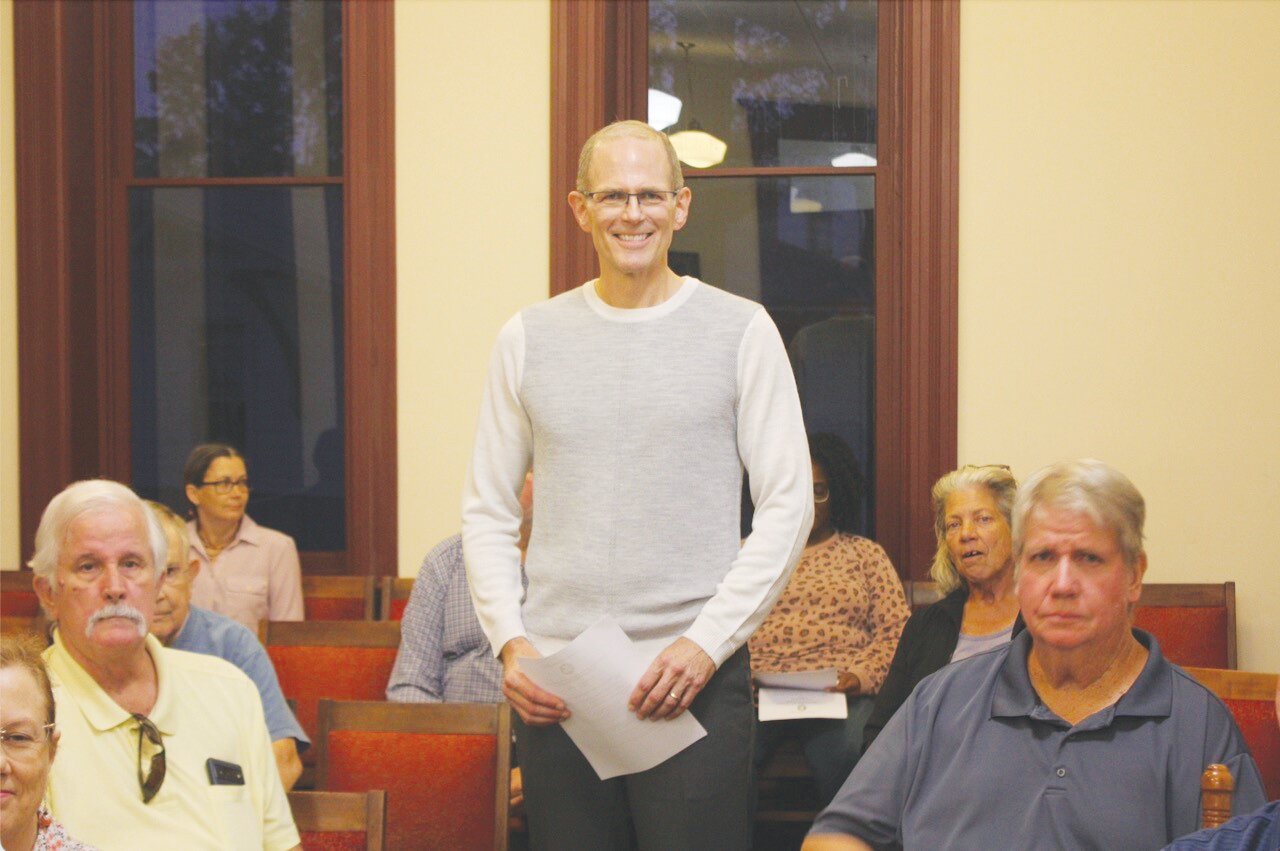Historical Society learns Green Cove Springs has gone through several transformations
GREEN COVE SPRINGS – John Nelson, a globetrotting cybersecurity expert with a profound fascination for local history in Clay County, was the guest speaker at last Tuesday’s County Historical …
This item is available in full to subscribers.
Attention subscribers
To continue reading, you will need to either log in to your subscriber account, below, or purchase a new subscription.
Please log in to continueDon't have an ID?Print subscribersIf you're a print subscriber, but do not yet have an online account, click here to create one. Non-subscribersClick here to see your options for subscribing. Single day passYou also have the option of purchasing 24 hours of access, for $1.00. Click here to purchase a single day pass. |
Historical Society learns Green Cove Springs has gone through several transformations
GREEN COVE SPRINGS – John Nelson, a globetrotting cybersecurity expert with a profound fascination for local history in Clay County, was the guest speaker at last Tuesday’s County Historical Society Meeting.
As Nelson stood before members and guests, he transported them to a bygone era, weaving together the captivating narrative of an area that has undergone several remarkable transformations throughout its history.
While now a residential neighborhood across the street from Hagan Ace Hardware, St. Johns Landing Apartments was originally established as housing for members of the U.S. Navy and their families in 1951. It was converted into public housing in 1960, and the area, just south of Black Creek and stationed on the western bank of the St. Johns River, has a history dating back to the 1760s.
A favored British officer at the time, Patrick Tonyn – who would later serve as the last Royal Governor of East Florida – received a 50,000-acre land grant for Magnolia Springs, which extended from Magnolia Springs on the south bank of Black Creek all the way up to the forks of the river.
During the American Revolutionary War, the governor had no choice but to burn down the property so Americans could not access it. Following the Treaty of Paris and the war's end in 1783, the property switched hands to be under Spanish control.
The area that would become Green Cove Springs has a unique history. No other place in Florida has had an uninterrupted run of 250 years, surviving the Civil War, three Seminole Wars, and under the rules of both Charles II of Spain and King George III of Britain. In the late 19th century, the area would be defined by the Magnolia Springs Hotel. Emphasizing grandeur, the hotel was an original resort and golf course in the state.
Isaac Cruft, a Boston hotelier and one of the most successful developers of the time, completed Magnolia Springs Hotel in 1881, a hallmark of architectural design during the Hotel Era of Clay County. For nearly three decades, state tourists, who could only access the posh resort hotel by steamboat, booked 200-plus rooms, suites and five privately-owned three-story cottages, maxing out at a capacity of 800 during the peak of the winter season, enjoying luxury and exotic adventure, which included alligator hunting.
“(The Magnolia Springs Hotel) attracted hundreds of Northerners each year to escape from the cold Northeast winters. There were all sorts of amusements,” Nelson said.
The steamboat played a pivotal role in the settlement’s history as an early mode of transportation in the state. Magnolia Springs, centrally located, served as an important drop-off and pick-up point for travelers. The area’s freshwater source, favorable location and strategic location were key factors that originally drew settlers, a one-day canoe ride leaving Black Creek or just a day’s journey from St. Augustine.
The Magnolia Springs Hotel’s dominance ended in the early 1900s when Henry Flagler extended the railroad to Miami, which allowed tourists to travel by train instead of boat to escape cold winter weather.








